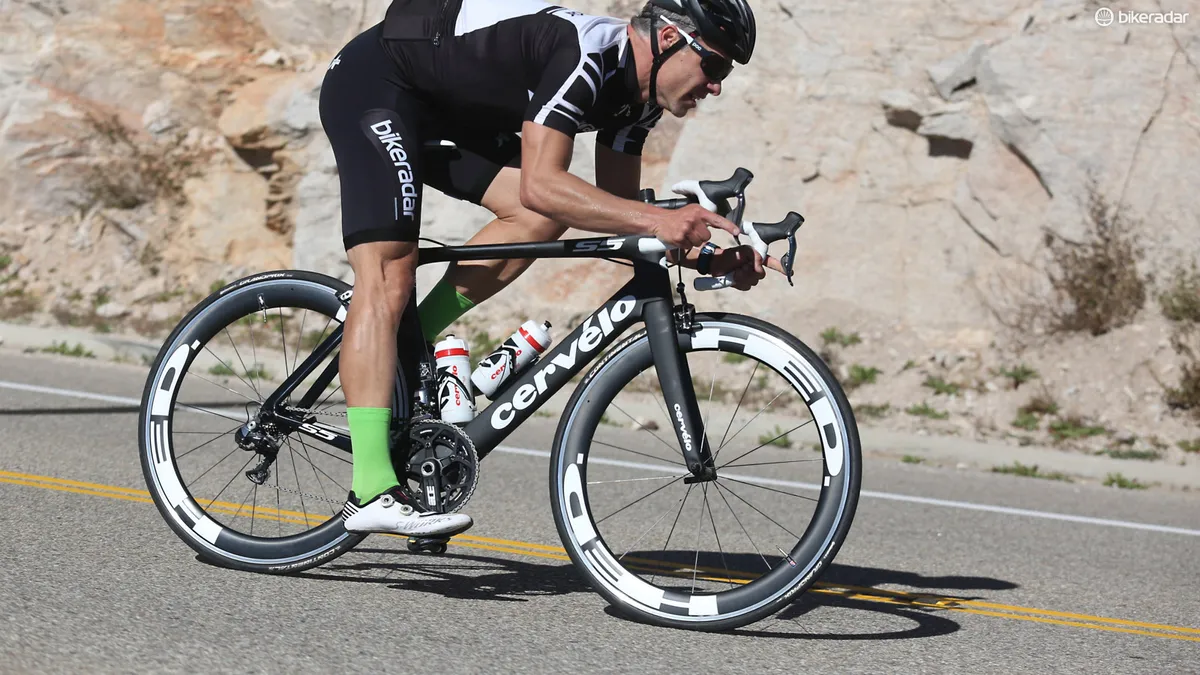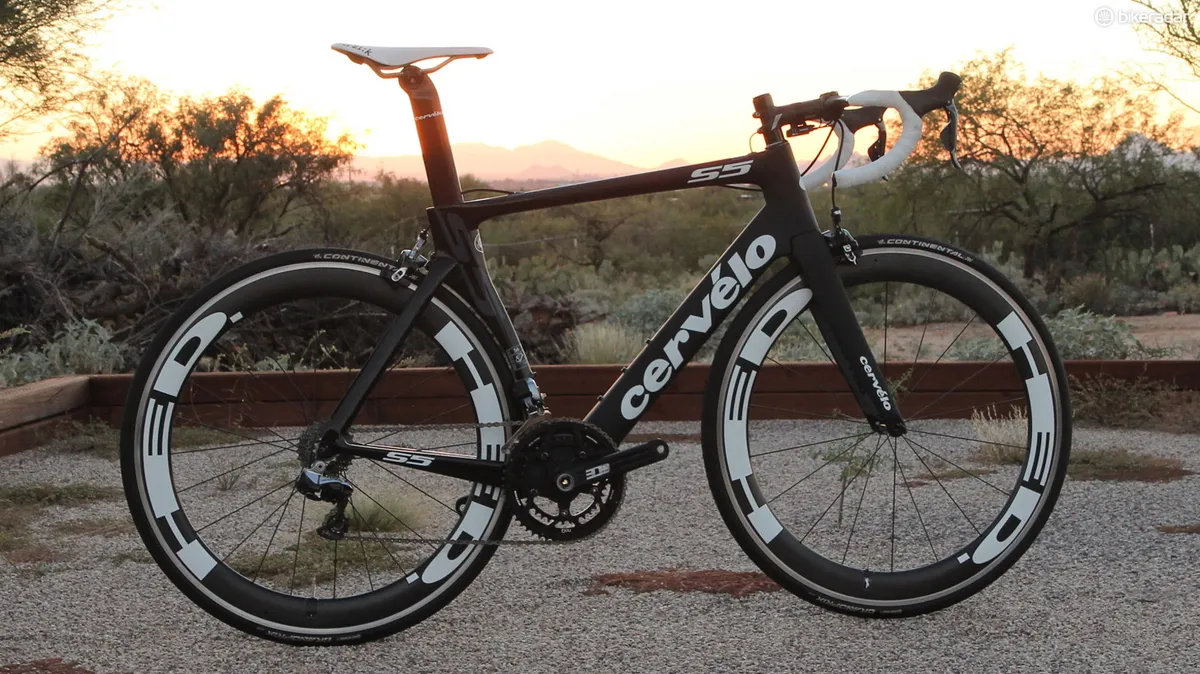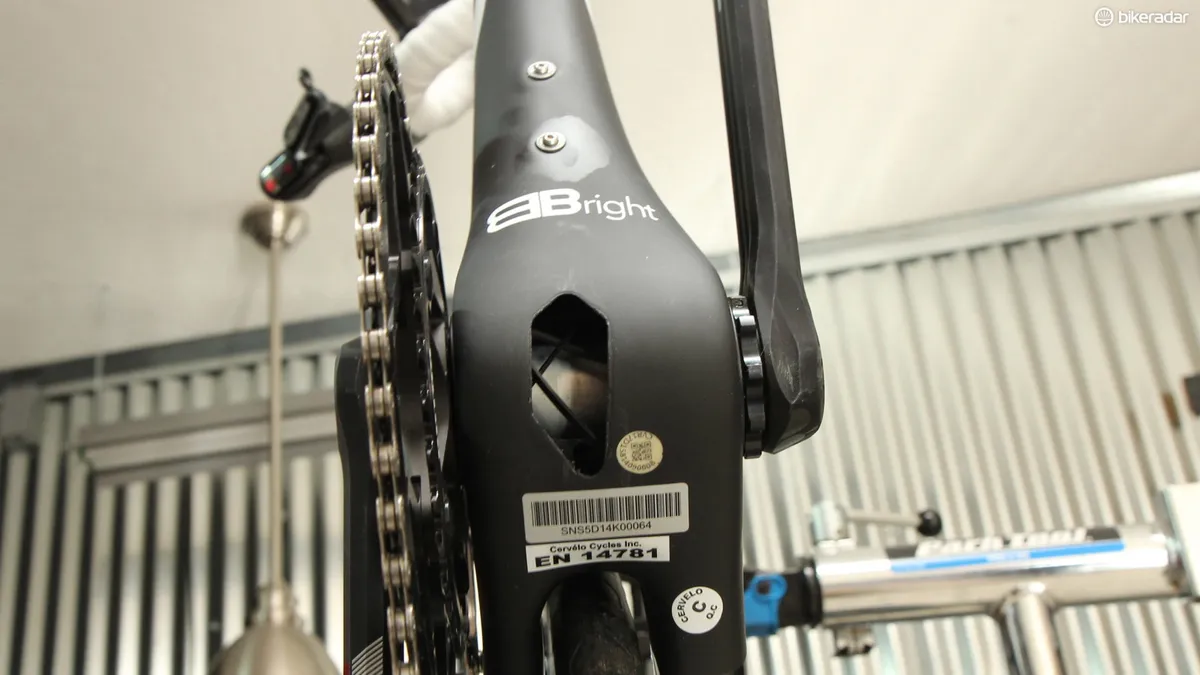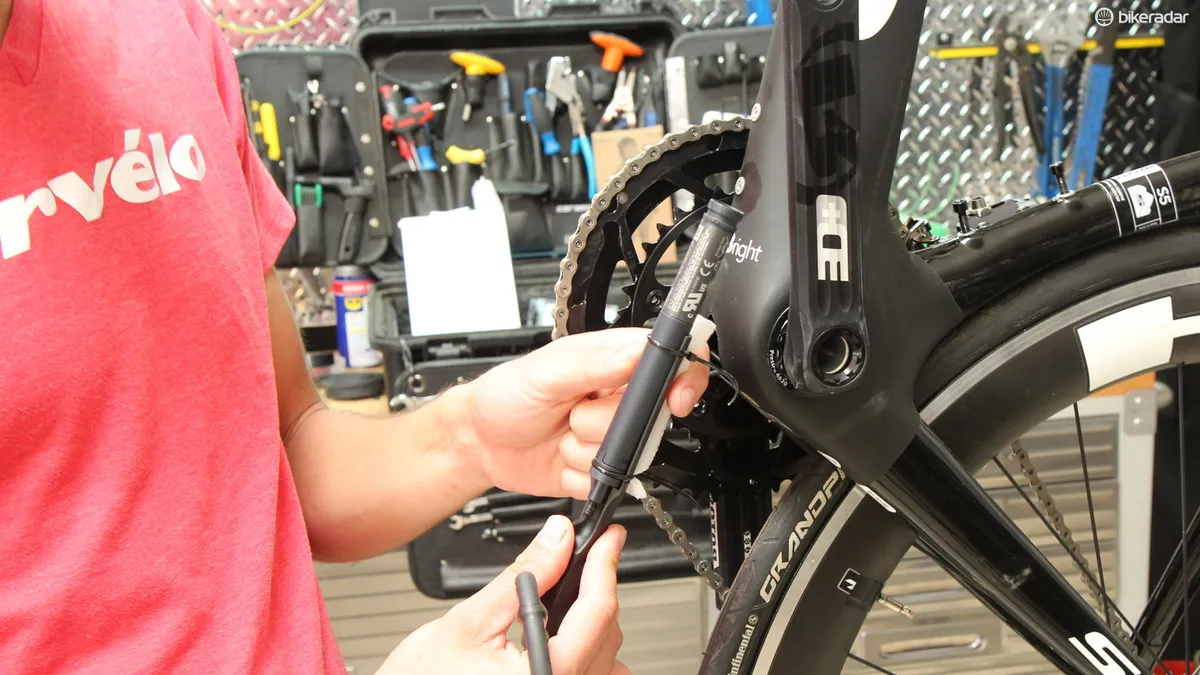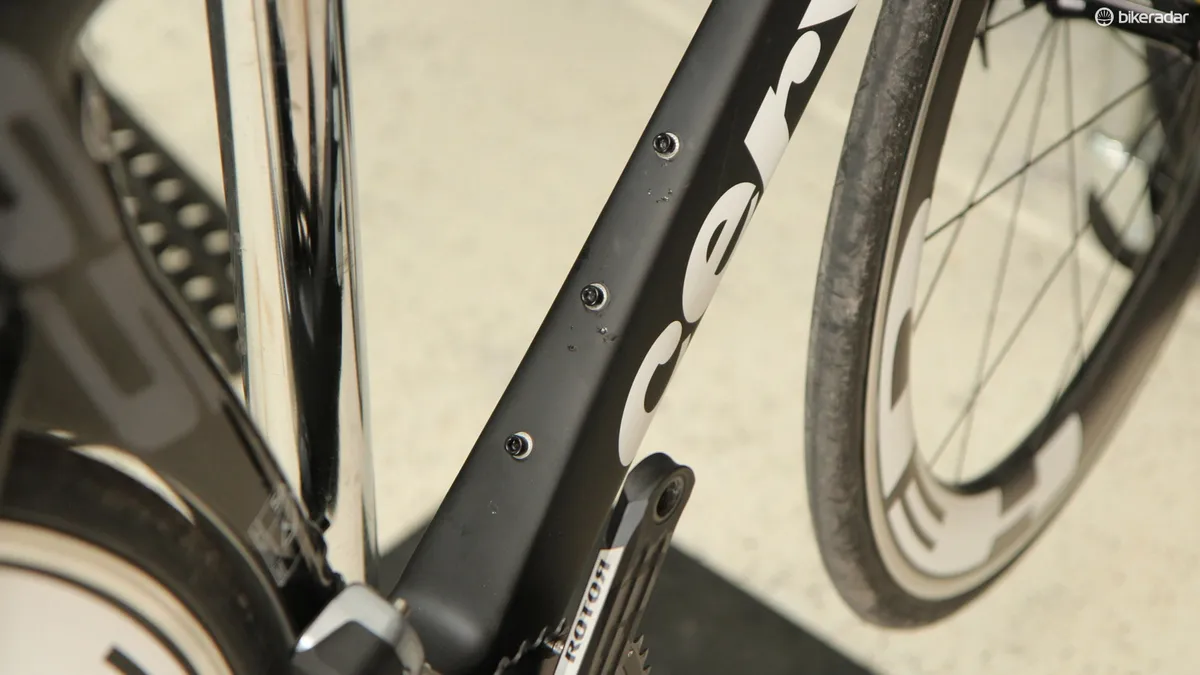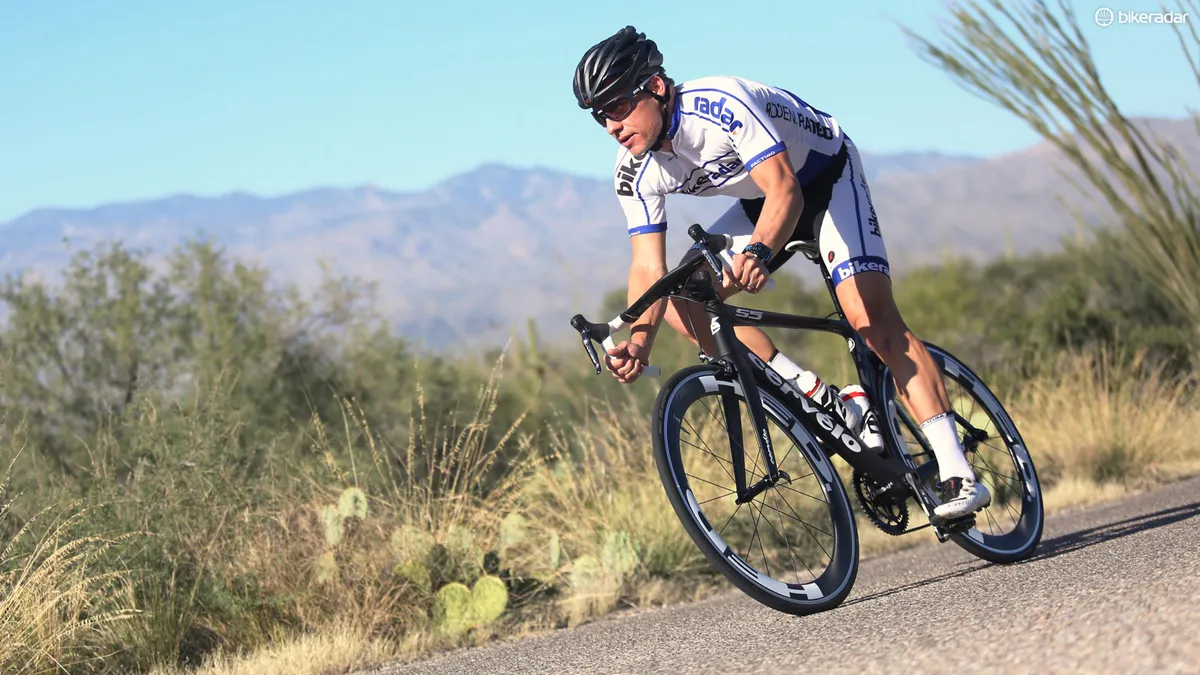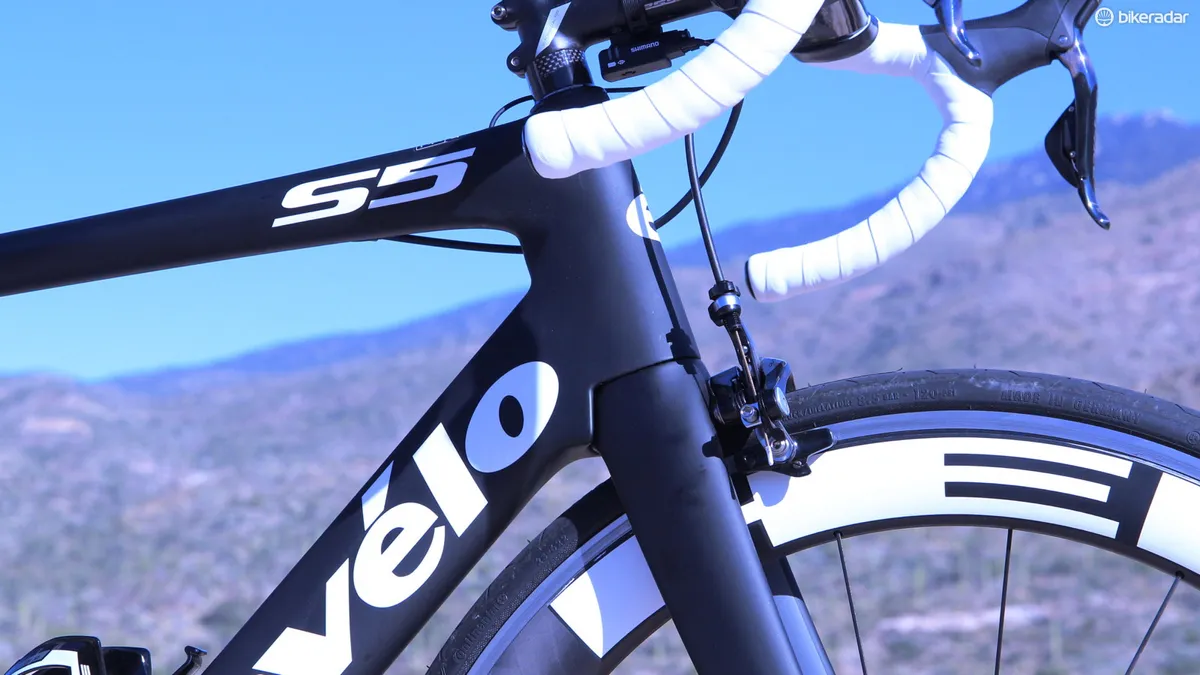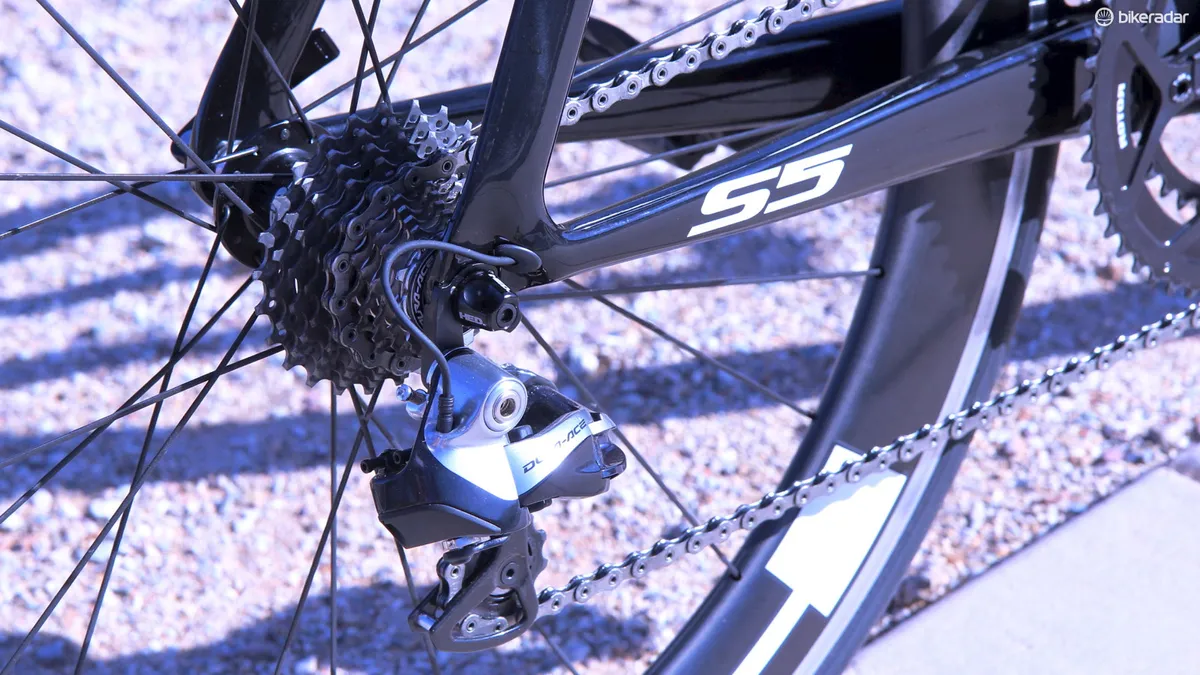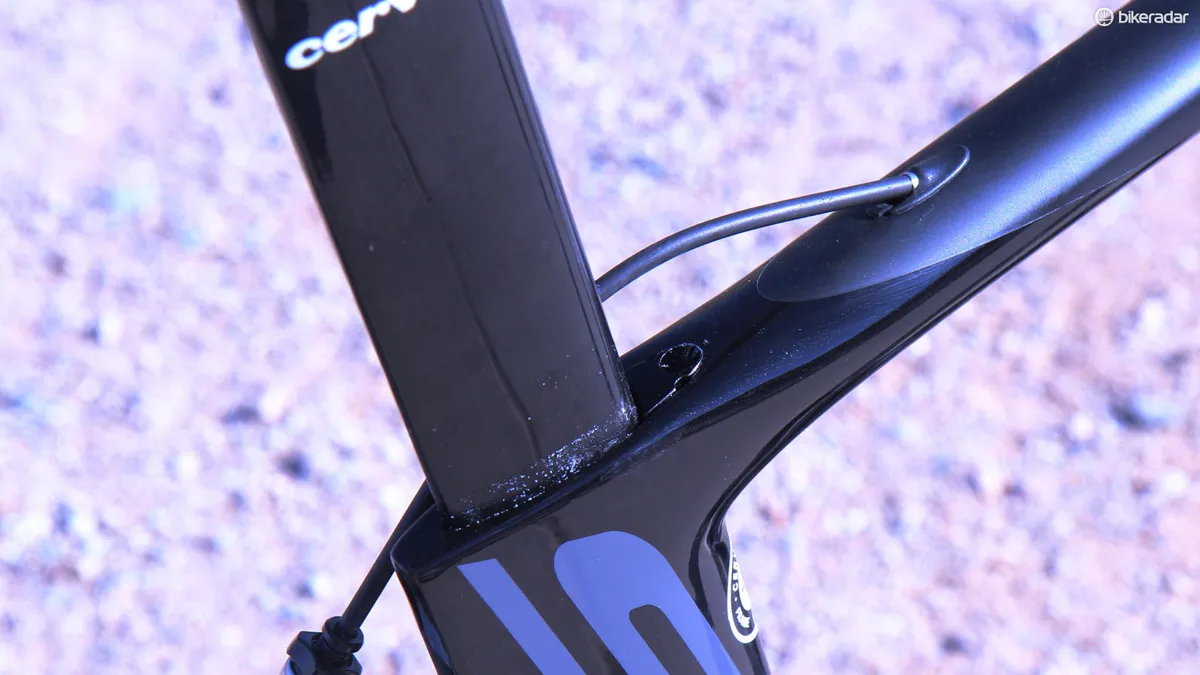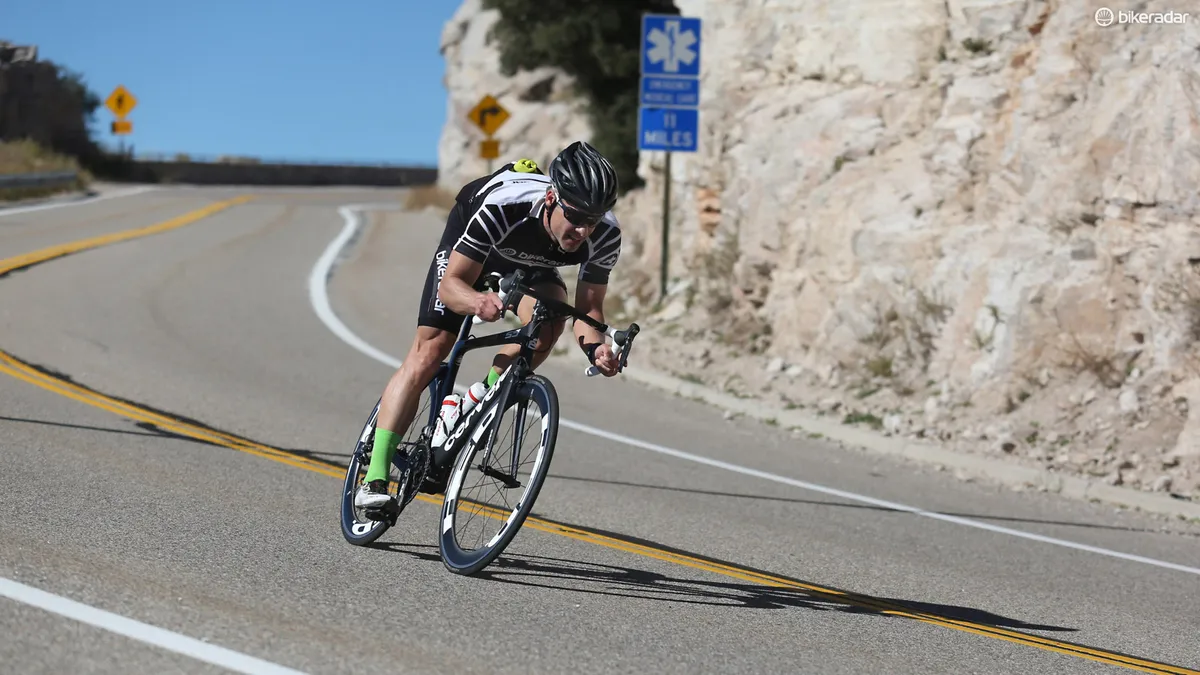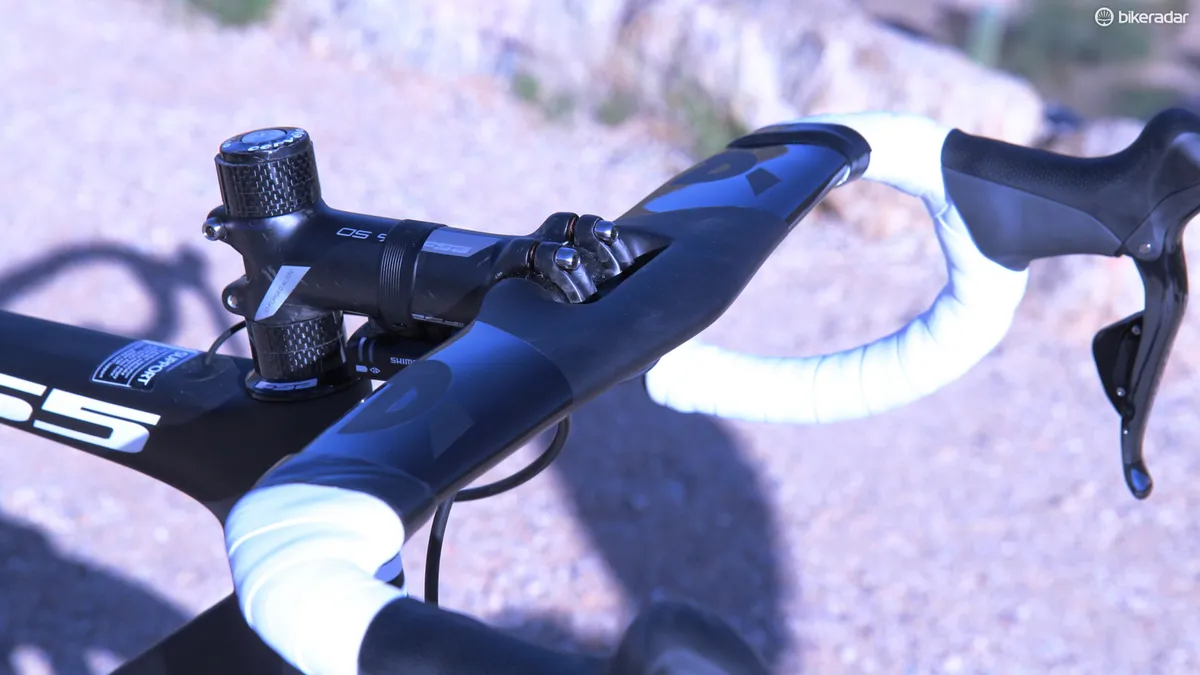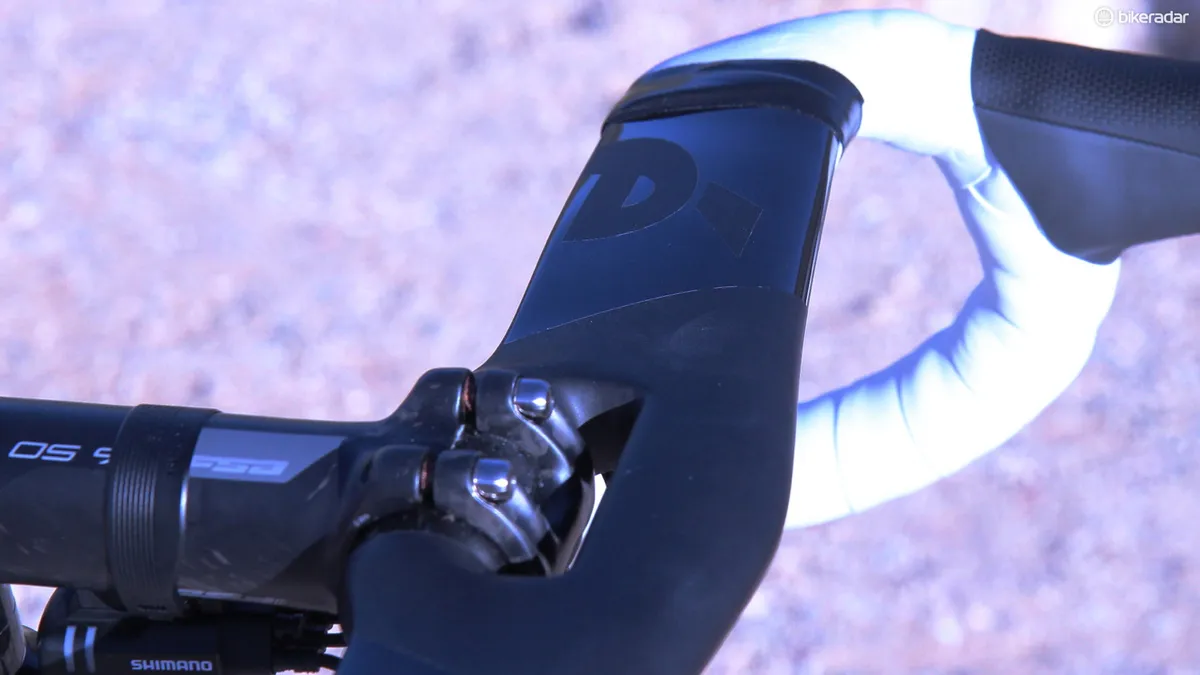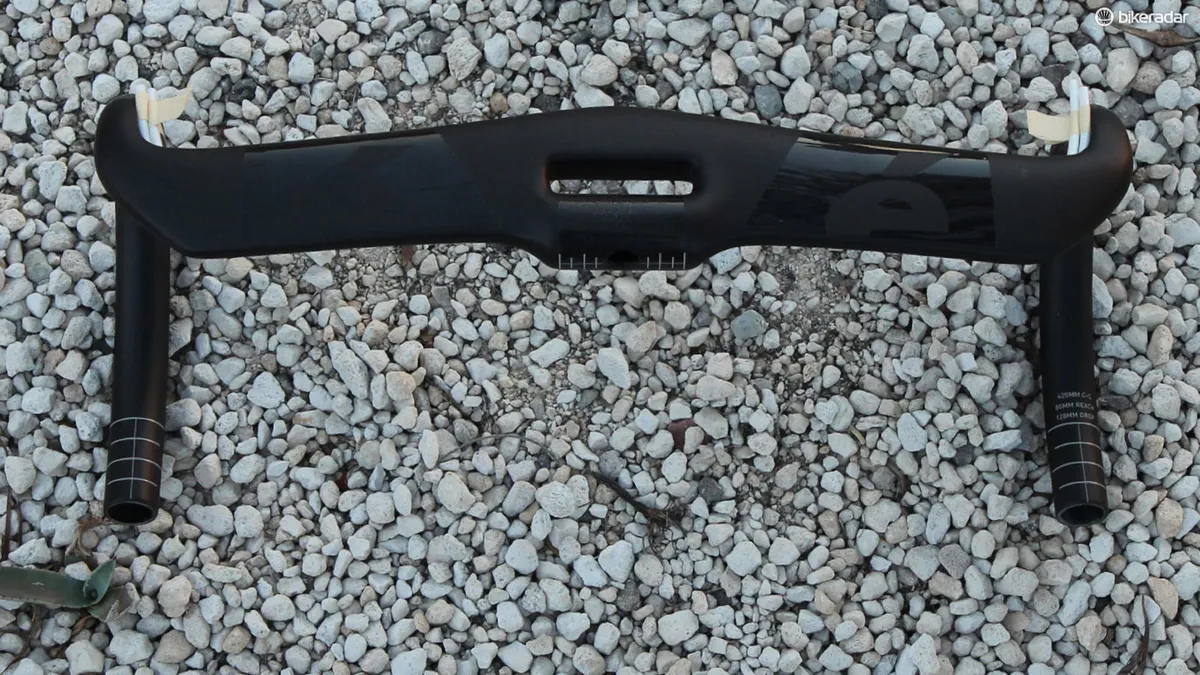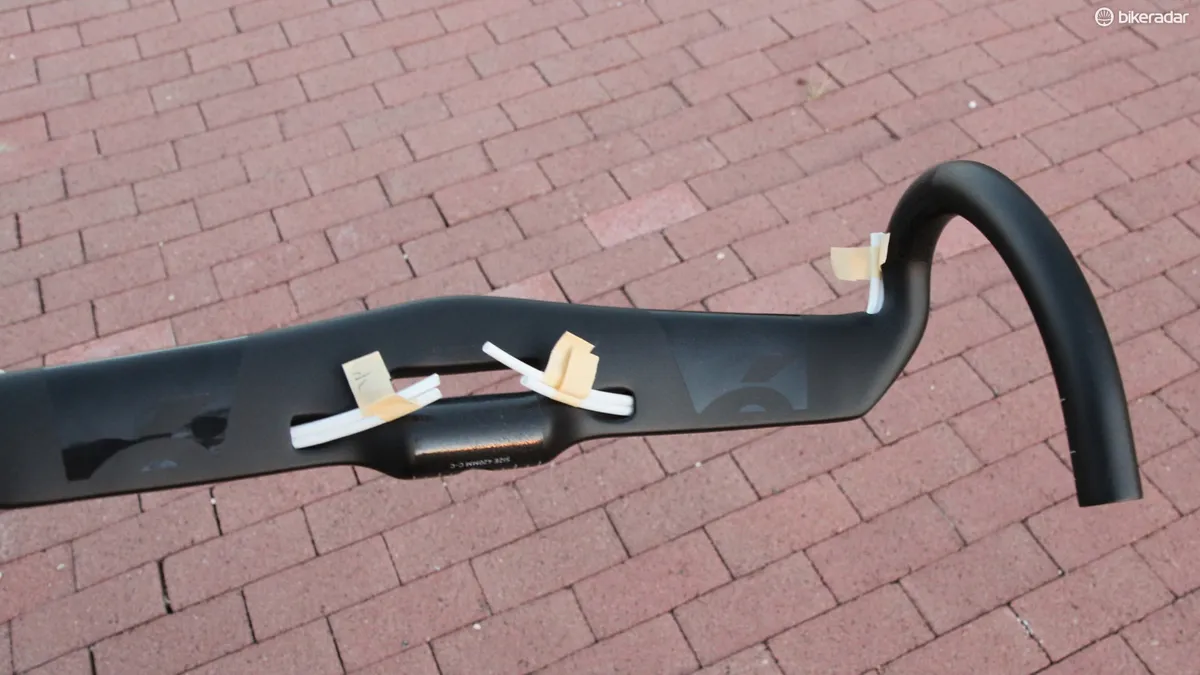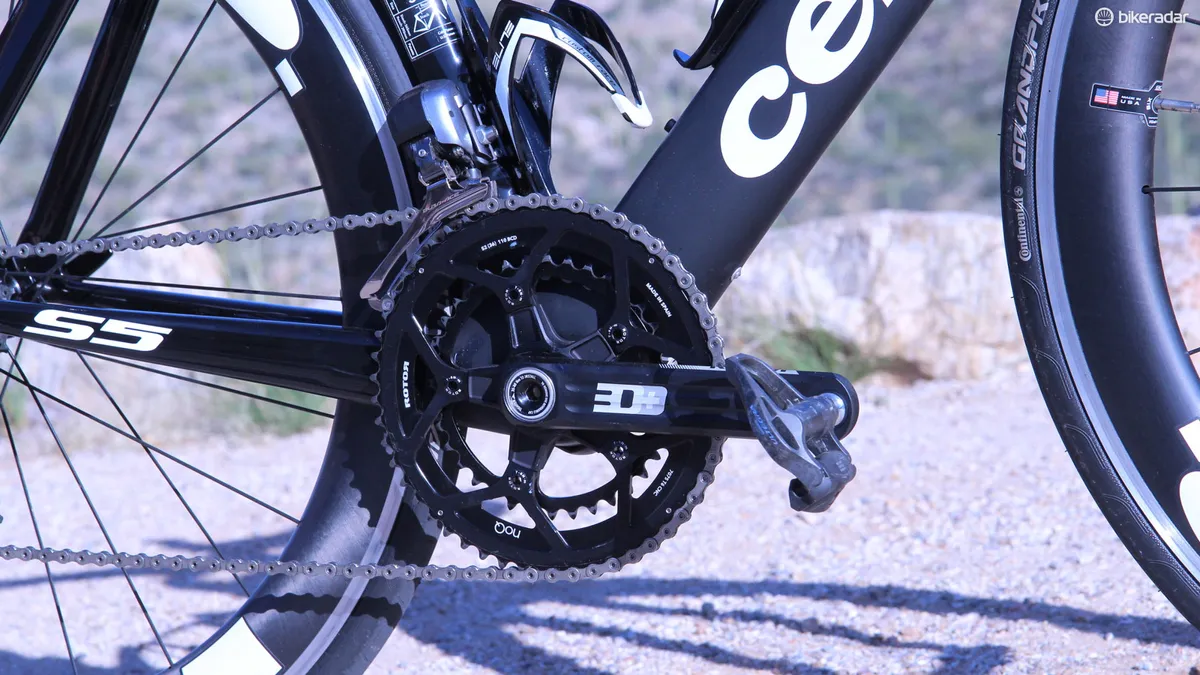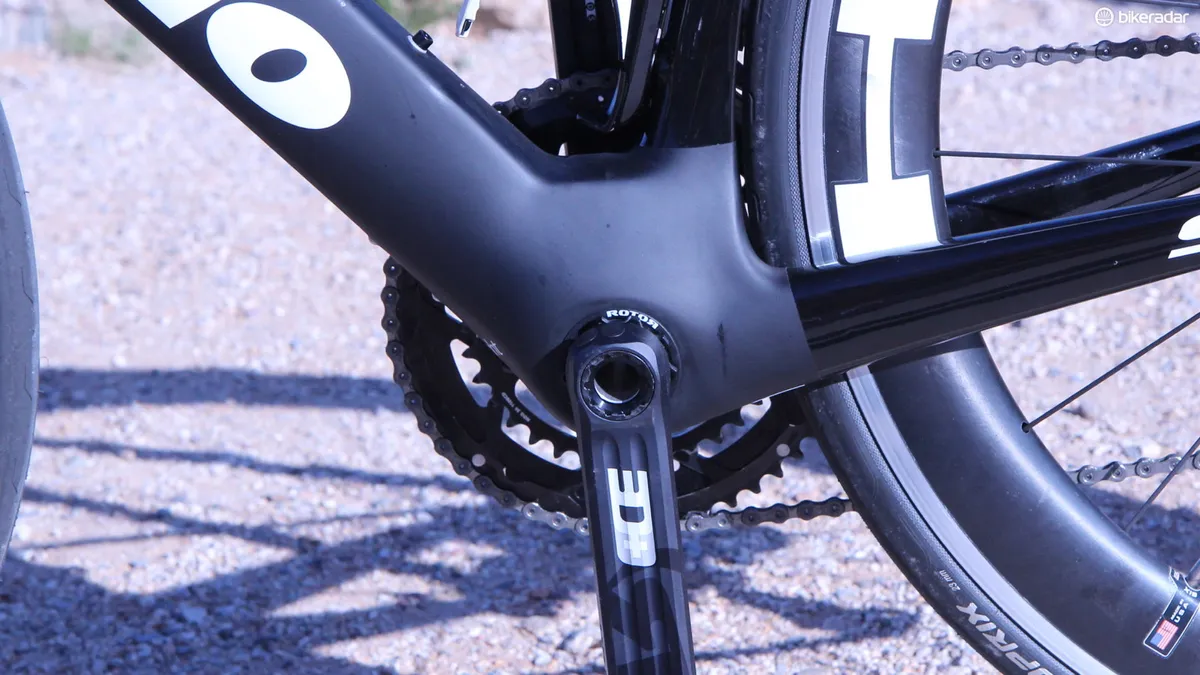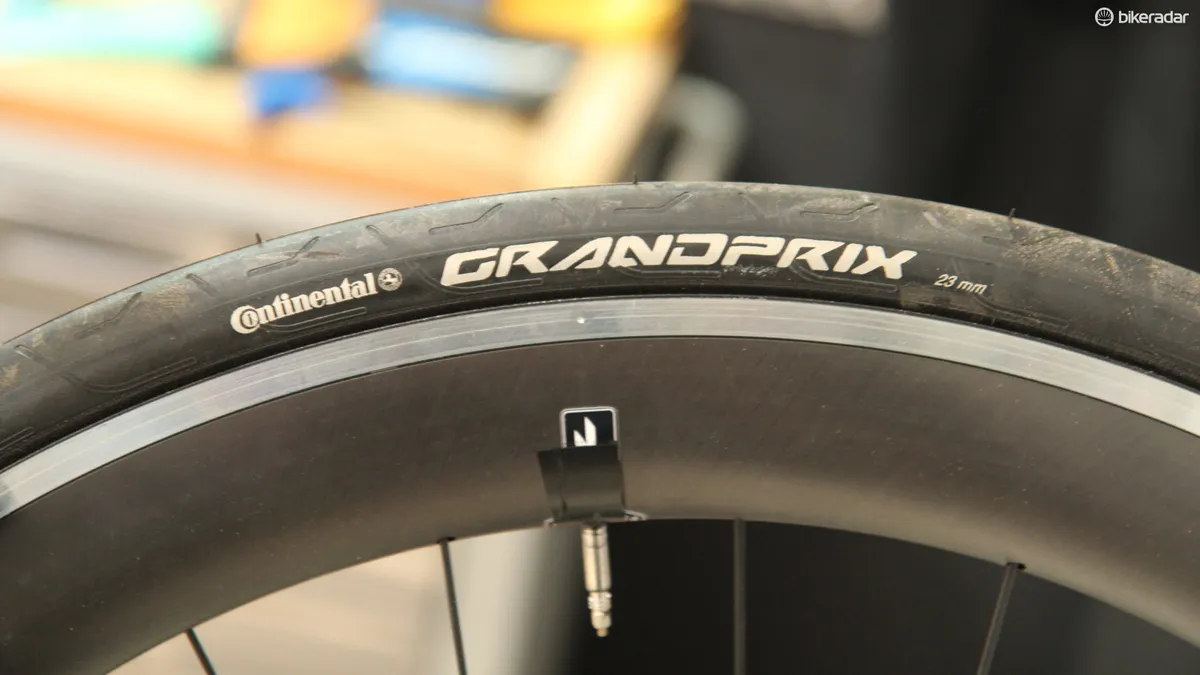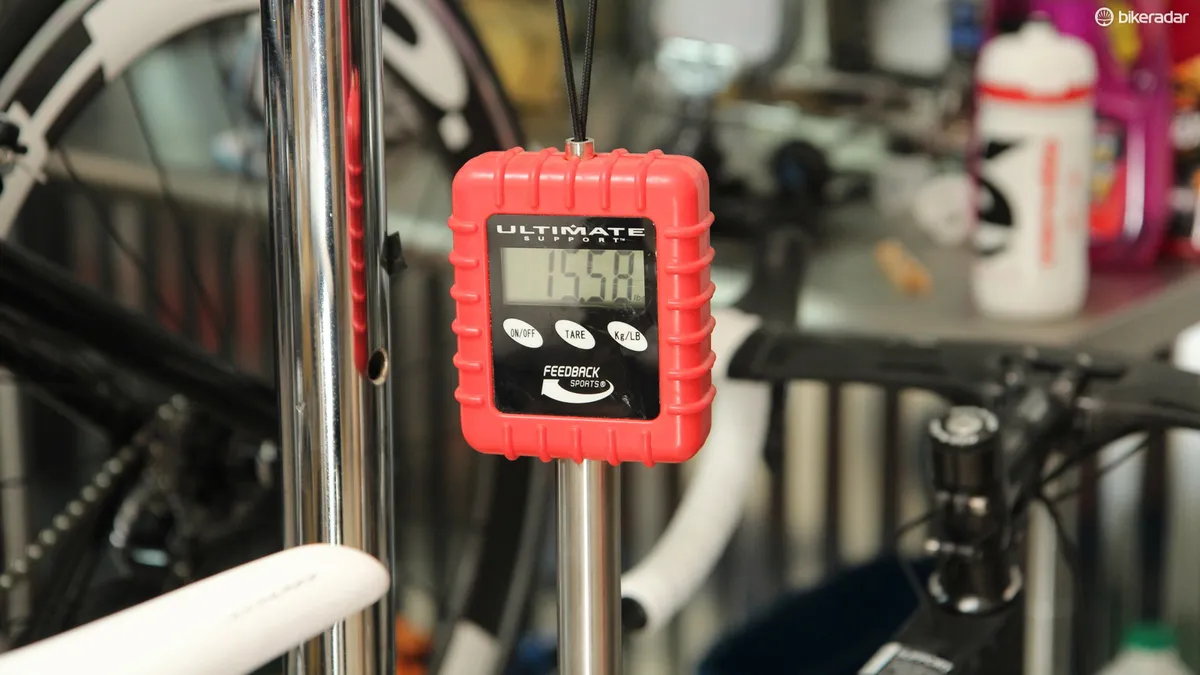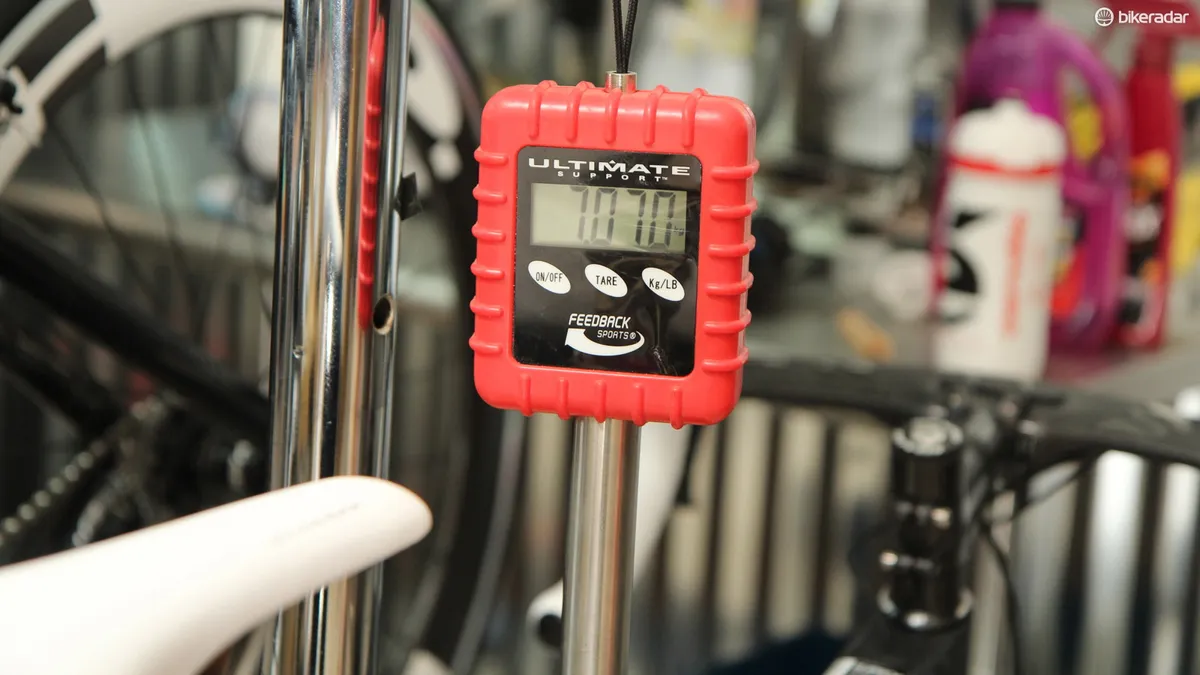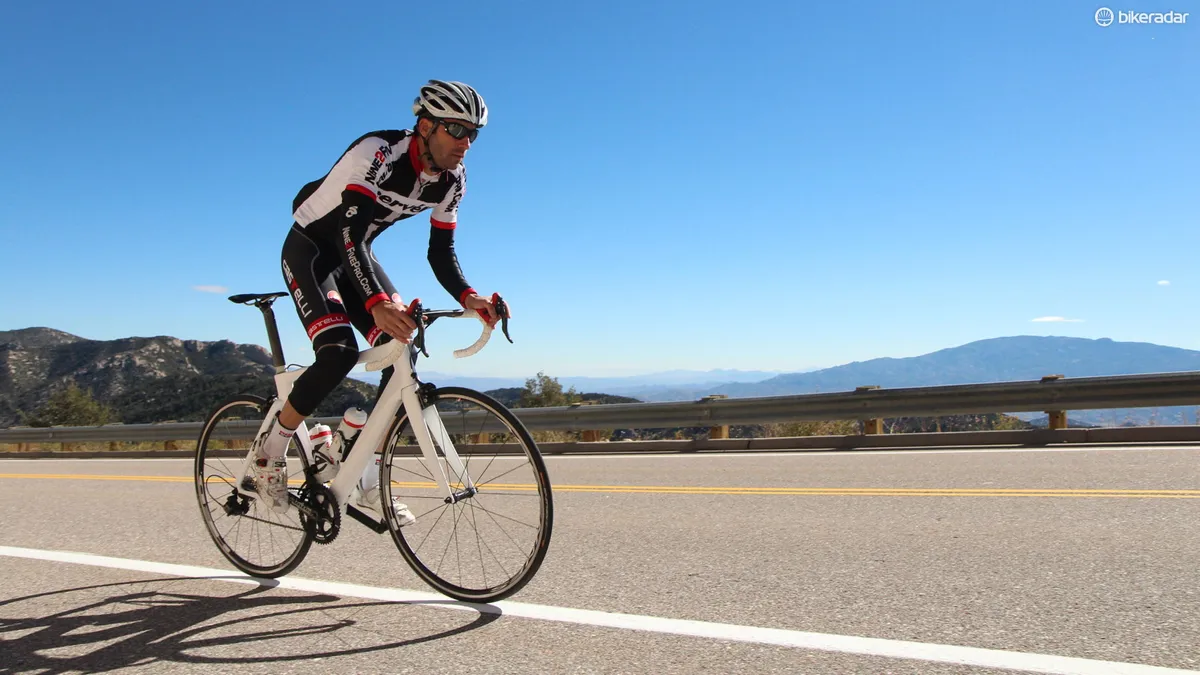Cervélo got out front early in the aero game, attacking the market in 2001 with its Soloist that evolved into the S5. But while the last iteration of the S5 delivered impressively low-drag numbers in the wind tunnel, its front-end handling was a little wishy-washy and the head tube was curiously tall for a bike hellbent on race performance.
For 2015, Cervélo engineers addressed those latter two points; front-end stack numbers are now in line with competitors’ race bikes, and the new S5 now corners with taut precision.
We tested the new S5 Dura-Ace Di2 build over two days in Arizona. A fun, twisty loop in a national park highlighted the improved steering, as we could flick the S5 in and out of fast corners. A ride up and back down Mount Lemmon (elevation 9,000ft / 2,700m) on a blustery day showcased the machine’s manners in mountains and crosswinds.
Notably, Cervélo built its first handlebar for this machine, the vanilla-branded “All-Carbon, Aero Handlebar”, in the pursuit of ever-lower drag numbers. According to company CFD calculations, a bike’s handlebar contributes roughly 30 percent of its total drag. When looking at a bike from the front, this makes sense. The question, though — as with bikes, helmets and rider position — is how to strike a balance between aero gains and all the other desirable qualities. Here, Cervélo leaned towards aero gains. The bar is demonstrably faster in a wind tunnel, but compromised in terms of comfort and places to put both your hands and Garmin or other computer.
The new S5 comes in three complete builds and alone as a frameset. All the bikes come with the Cervélo handlebar.
- Highs: Vastly improved front-end handling and positioning; Di2 is top shelf; novel handlebar is faster in a wind tunnel
- Lows: Wheels are good, but not good enough for the asking price; novel handlebar lacks comfort for everyday riding
Frame: Lower and stiffer with modern cabling options
Cervélo isn't a big company, so iterations of frames don't come as fast as they do from the likes of Trek or Specialized. So, this 2015 S5 is the first with the capability to house an internal Di2 battery (tucked into the down tube as the seatpost is too skinny) and so-called future-proof cable routing. Neither affect the ride or handling, of course, but they do clean up the bike's aesthetics.
The old S5 got knocked by racers for the tall head tube and laterally soft front end. Cervélo reworked the geometry, steerer dimensions, and carbon lay-up to address this shortcoming. The head tube is now a claimed 35 percent stiffer, and the fork 17 percent laterally stiffer, bringing the bike up to par with the company's R5. Also, the head tube was shortened (our 56cm had a 15.7cm head tube), so you can get lower, and put more weight over the front end, without weird stem angles. In any event, the improvements are immediately noticeable. The bike doesn't handle like a novelty; it rides like a race bike.
A few other test riders at Cervélo's Arizona launch commented that the bike seemed a little more comfortable than previous iterations. Cervélo lead engineer Graham Shrive said that comfort is harder to quantify than stiffness. "It's easy to make the seat tube really stiff; just run high modulus fibers all the way the down seat tube. The problem with that is it doesn’t lend itself to comfort. Instead, we’ve used things like 25-degree fibers and given them a little bit of a twist to deflect some of the impacts. Also, there is a certain decoupling with the frame seatpost clamp bolt and the single bolt at the saddle. And having the wider rims makes for wider tires. Anywhere we could have looked at comfort we have."
In our experience, the S5 may have been a touch more compliant than the last iteration, but this could well have to do with the girthier clinchers and a seatpost clamp design that allows a little cantilevering in the saddle.
Components: Chosen for performance and business relationships
Why Rotor cranks and not Shimano Dura-Ace, you ask? Well, because Rotor has long been a partner of Cervélo based on their compatibility with the Canadian brand's BBright standard. The new 3D+ aluminum cranks are stiff enough, and we are fans of the 52/36 semi-compact chainrings. Climbing for 25 continuous miles up Mount Lemmon, for instance, the 36t little ring was a welcome companion. We never once wished, 'if only the small ring was bigger!' Bombing back down, we did spin out in a few places on the 52x11. Still, for most riders in most regions, we are big believers in 52/36.
Shimano's Dura-Ace Di2 9070 group is best in class. Somewhat curiously, Cervélo chose not to use the new Direct Mount brakes, saying they made frame manufacturing overly complex without any additional aero benefit.
Wheels have always been a point of discussion for Cervélo, internally and externally. Tradition has been to spec cheaper 'training wheels', assuming that riders will already have high-end race wheels, or the dealer will up-sell wheels with the bike. This year, Cervélo tweaked the model slightly, offering sexier training wheels. The top two bikes get HED Jet Plus 6 SCT, a US$1,800 wheelset that weighs a claimed 1,737g and comes with a 220lb rider weight limit [corrected from earlier mistakes of 1,849g / 190lb limit]. The 60mm deep rims look good at a glance, and in all fairness perform well.
Steve Hed has been studying wheel aerodynamics longer than some wheel companies have been in business, and the wheels didn't handle any worse than top-end Zipps of similar depth in the whipping wind. That said, they are flexible-carbon-fairing, aluminum clinchers; not a top-shelf pairing for such a high-performance frame like the company's all-carbon Stinger wheels would be, for example. Ultimately, the wheels were chosen so the bike looks good and can be raced as is, and so that Cervelo dealers can swap them out for other wheels and then sell them separately, if the customer prefers.
Finally, the pièce de résistance, the All-Carbon, Aero Handlebar. Once deciding to rework this critical component, Cervélo engineers and designers debated heavily on how far to push the envelope. They finally settled on a design that had, in Shrive's words, "90 percent of the benefits with 20 percent of the weirdness." We found the compact bend quite comfortable. With the wind howling, we rode at least an hour in the drops. Reach to the levers is easy in both the drops and on the hoods.
Riding on the flat, 3:1 ratio tops, however, is only tolerable. Even as a rider with large hands, you wouldn’t pick this design for comfort. Exacerbating the situation is the absence of bar tape. Even on a cool day, palms on bare carbon will sweat, making for a slippery interface. We also inadvertently discovered that you lose the praying mantis, forearms-on-tops position with this bar. While opening a Clif Bar, we dropped down to this stance with arm warmers on, and nearly slid off the front of the bike. No bar tape equals no grip. Sure, you could wrap the tops with tape, but that would somewhat defeat the aerodynamic design.
Verdict
If you are shopping for a bike on low aero-drag numbers, the new S5 with this bar is an excellent option. But just as the S5 has improved its real-world characteristics as well as its aero numbers with each revision, we look forward to watching the progression of Cervélo's handlebar, too.
